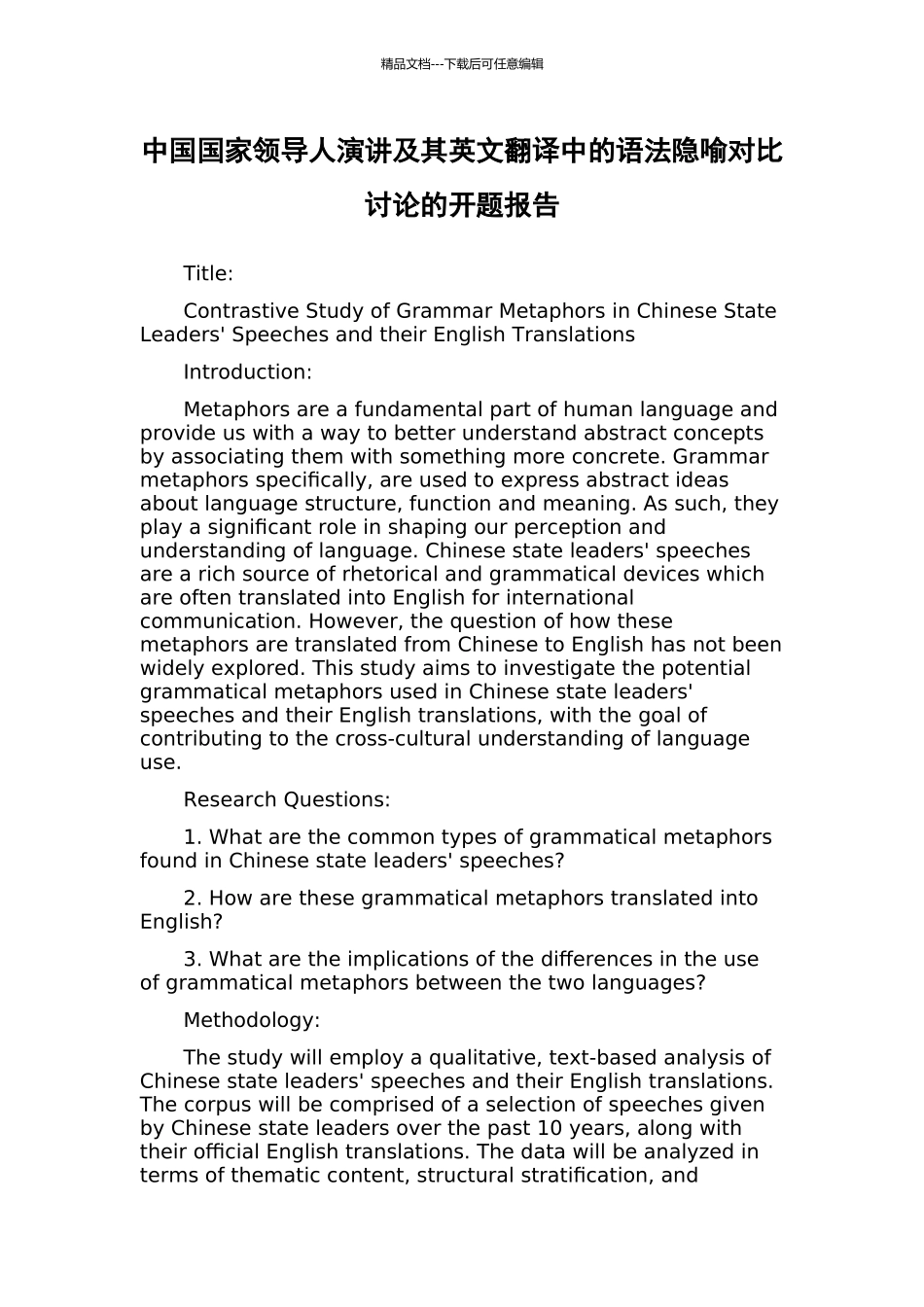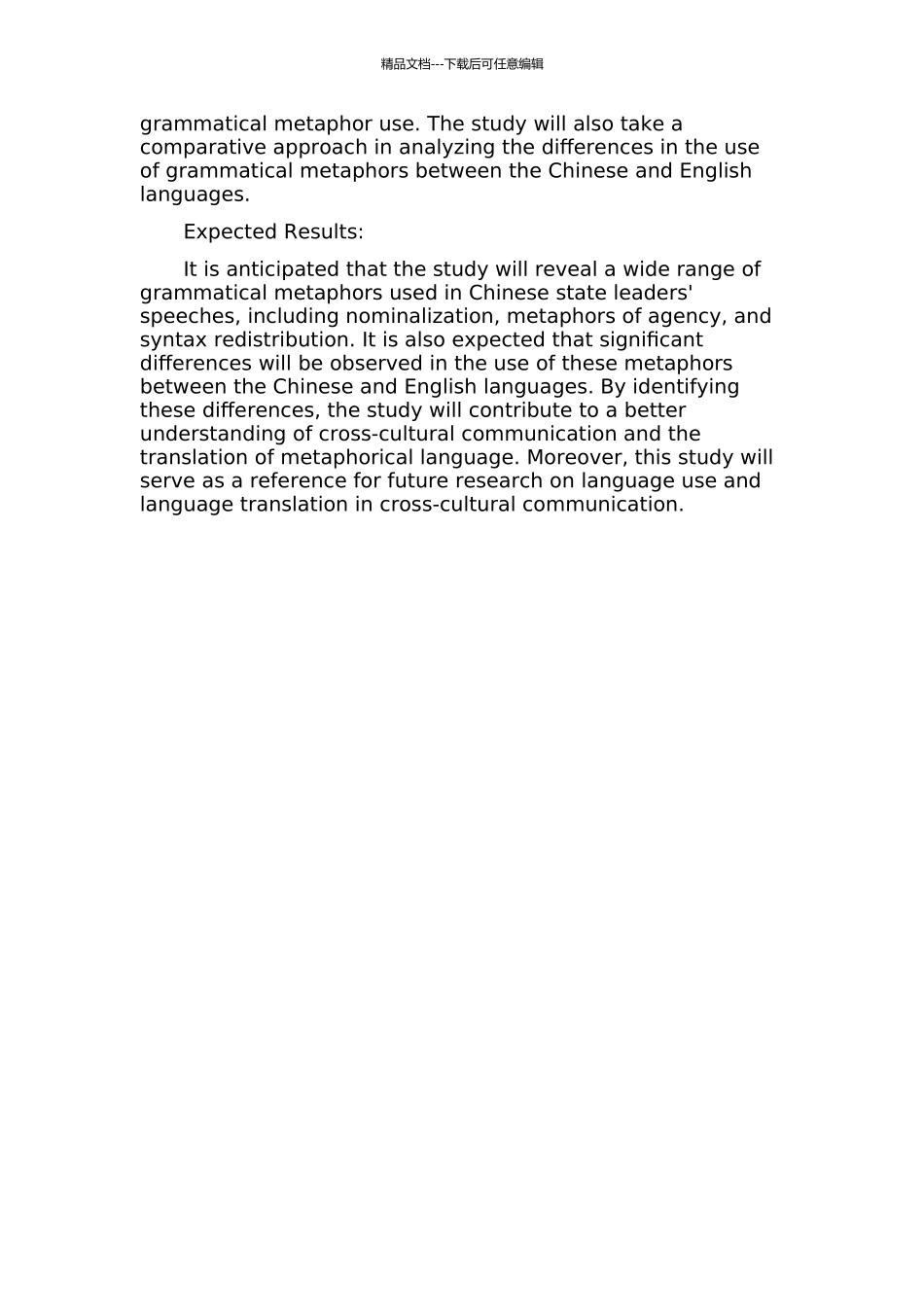精品文档---下载后可任意编辑中国国家领导人演讲及其英文翻译中的语法隐喻对比讨论的开题报告Title:Contrastive Study of Grammar Metaphors in Chinese State Leaders' Speeches and their English TranslationsIntroduction:Metaphors are a fundamental part of human language and provide us with a way to better understand abstract concepts by associating them with something more concrete. Grammar metaphors specifically, are used to express abstract ideas about language structure, function and meaning. As such, they play a significant role in shaping our perception and understanding of language. Chinese state leaders' speeches are a rich source of rhetorical and grammatical devices which are often translated into English for international communication. However, the question of how these metaphors are translated from Chinese to English has not been widely explored. This study aims to investigate the potential grammatical metaphors used in Chinese state leaders' speeches and their English translations, with the goal of contributing to the cross-cultural understanding of language use.Research Questions:1. What are the common types of grammatical metaphors found in Chinese state leaders' speeches?2. How are these grammatical metaphors translated into English?3. What are the implications of the differences in the use of grammatical metaphors between the two languages?Methodology:The study will employ a qualitative, text-based analysis of Chinese state leaders' speeches and their English translations. The corpus will be comprised of a selection of speeches given by Chinese state leaders over the past 10 years, along with their official English translations. The data will be analyzed in terms of thematic content, structural stratification, and 精品文档---下载后可任意编辑grammatical metaphor use. The study will also take a comparative approach in analyzing the differences in the use of grammatical metaphors between the Chinese and English languages.Expected Results:It is anticipated that the study will reveal a wide range of grammatical metaphors used in Chinese state leaders' speeches, including nominalization, metaphors of agency, and syntax redistribution. It is also expected that significant differences will be observed in the use of these metaphors between the Chinese and English languages. By identifying these differences, the study will contribute to a better understanding of cross-cultural communication and the translation of metaphorical language. Moreover, this study will serve as a reference for future research on language use and language translation in cross-cultural communication.

